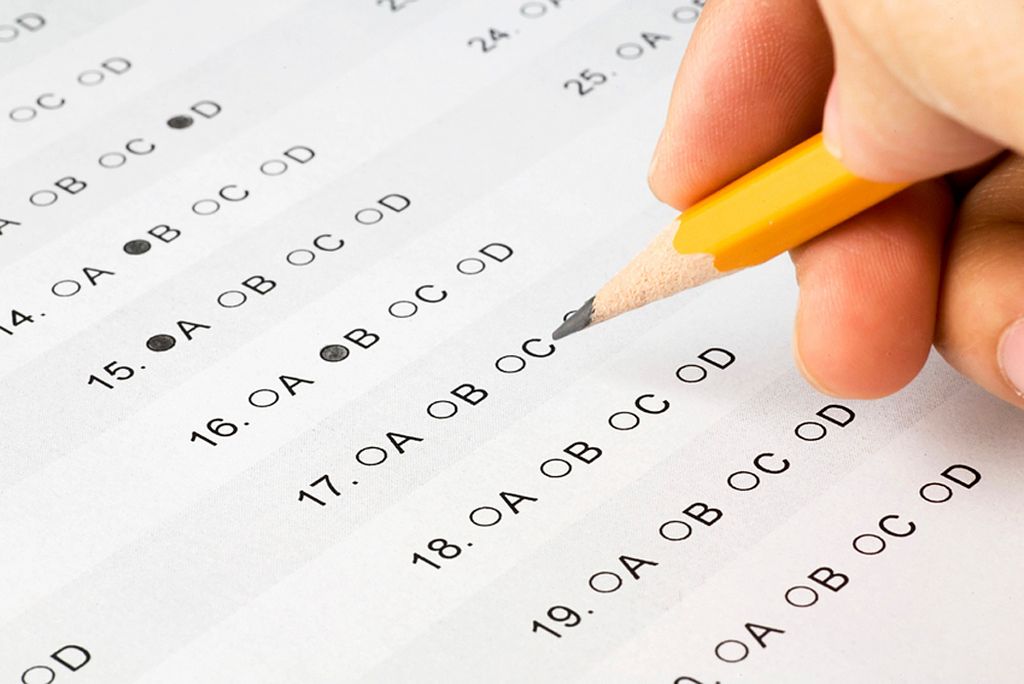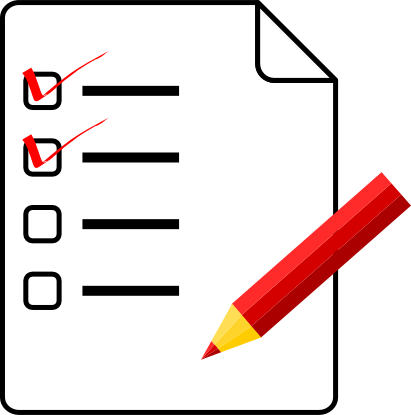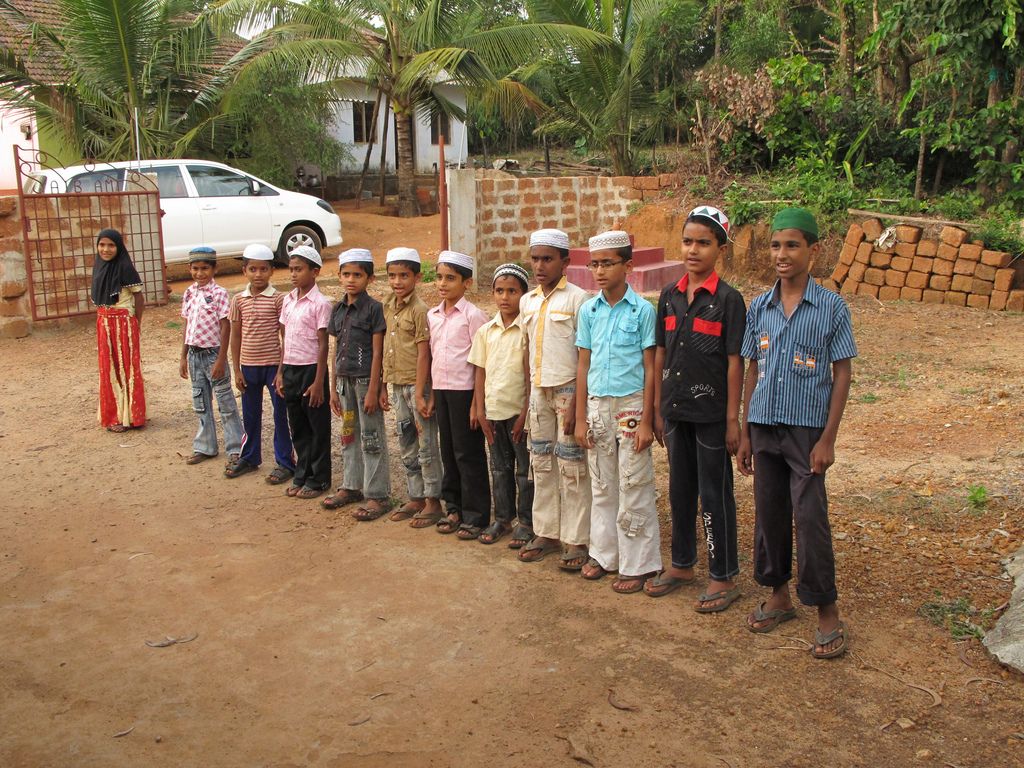The number of pens each learner in your class has.

Questionnaire or observation.
|
Previous
12.3 Developing questions
|
Next
12.5 Classifying and organising data
|
The aim of the research influences the way data will be collected. Four methods of collecting data are:

Observation: Data collection using observation does not entail personal contact. Counting the number of vehicles crossing an intersection every hour would be a good example of observational data gathering.

Interview: This takes place usually between two people where one is called the interviewer and the other is the interviewee or respondent. This method is usually chosen when it is convenient to talk to the respondents directly. For example if we wanted to determine whether people were happy with the way they were treated by sales staff.

Questionnaire: a questionnaire is a predetermined set of questions given to a number of respondents to complete. This instrument is good for getting information from many people. Questionnaires are also appropriate for getting information from people that are spread over a wide area and that are not easy to contact face-to-face. A questionnaire should have a short explanation of what your research is about. As with all data collection methods, questionnaires should always adhere to ethical and moral codes of conduct. An example of a questionnaire in use is the national population census for South Africa, which takes place every ten years (the last one was in 2011).

The method of collecting data must be suitable for the type of research we are doing. Let's look at examples to see why.
Which method would be appropriate for collecting data for each of the cases below? Give a reason for your choice.
The symptoms of hospital patients with cancer.

Which method would you use to collect data for each of the following?
The number of pens each learner in your class has.

Questionnaire or observation.
The number of hours each learner in your class slept last night.
Questionnaire
The weight of all learners in your class.
Questionnaire or database (if this info is recorded, e.g. for Physical Education)
Customers' opinions on the new design of a shop.

Interview.
Develop two or three interview questions you can use to get information about:
Learners' opinions about how their school uses technology in the classroom.
Learner-dependent answer.
Whether learners in your school have mobile phones.

Learner-dependent answer.
The brands of cell phones that learners have.
Learner-dependent answer.
The group that we want to collect data from is called the population. In some cases, we can ask every person in the group we are interested in, to answer a questionnaire. Of course, not everyone will answer. The higher the number of respondents you get, the more valid your data will be.
In other cases, we need to choose a sample of people from the population. The choice of sample can have an effect on the reliability of the data and could even lead to sample bias.
Sample bias occurs when a certain section of the population from which the sample is drawn is not representative of that population. You, as the researcher, need to find a way to take a sample that is likely to represent the population well. For example, if you want to find out what learners at your school think about physical exercise and keeping fit, the soccer team would not be a good sample. They don't represent the rest of the learners, and might be biased, because they are more likely to be fit and enjoy exercising. You should rather find of a way of giving every learner an equal chance of being in your sample. One way would be to ask every tenth learner who arrives at the school gate in the morning.
One way to avoid sample bias is to select a random sample. A sample is random if every member of the population has the same chance of being selected - the interviewer doesn't choose particular people. Asking every tenth learner who arrives at the school gate would be an example of a random sample. Sometimes random samples can still result in sample bias however - so it is always important that your random sample is still representative!

An example of a population is all the learners at a school

An example of a sample is a small (representative!) group of learners from the same school
The questionnaire also has an important role in making sure that the information you collect is valid. You should aim to get a high number of respondents and accurate information. If not enough people fill in the questionnaire, then you don't know whether the information you get reflects the real situation.

The tips below help you to make sure that your questionnaire is clear and accurate, and also that people are likely to complete it.
You can make some questions easier to answer. Using categories instead of precise answers may also make it easier for respondents to complete the questionnaire. For example, most people do not like telling people their age, weight or salary, but grouping those numbers into categories makes it easier to answer.
Decide how to ask the question. There are two different types of responses: open-ended and closed-ended.
In an open-ended question, the answer is usually the opinion of the respondent and the respondent can answer in their own words. In this way you can gain insightful data and avoid receiving answers that are biased. A disadvantage to this type of question is that respondents might leave it out if it takes too long to answer.
Closed-ended questions could give respondents some options for the respondent to choose from, which is convenient because they can simply tick the right box.
Collect information on the following topic: “the heights of learners in your class”. Base your data collection tool on one of the examples given below.

Choose one of the following three approaches:
Questionnaire example Hi there! We are conducting a survey to get information about the heights of learners in this school. Please tick the correct box below. Is your height:
Shorter than \(\text{140}\) \(\text{cm}\)? | |
\(\text{140}\) - \(\text{149}\) \(\text{cm}\)? | |
\(\text{150}\) - \(\text{159}\) \(\text{cm}\)? | |
\(\text{160}\) - \(\text{169}\) \(\text{cm}\)? | |
\(\text{170}\) \(\text{cm}\) or taller? |
Observation sheet for collecting measurement data
Range of heights (cm) | Number of learners |
Shorter than \(\text{140}\) \(\text{cm}\) | |
\(\text{140}\) \(\text{cm}\) - \(\text{149}\) \(\text{cm}\) | |
\(\text{150}\) \(\text{cm}\) - \(\text{159}\) \(\text{cm}\) | |
\(\text{160}\) \(\text{cm}\) - \(\text{169}\) \(\text{cm}\) | |
Taller than \(\text{170}\) |
|
Previous
12.3 Developing questions
|
Table of Contents |
Next
12.5 Classifying and organising data
|